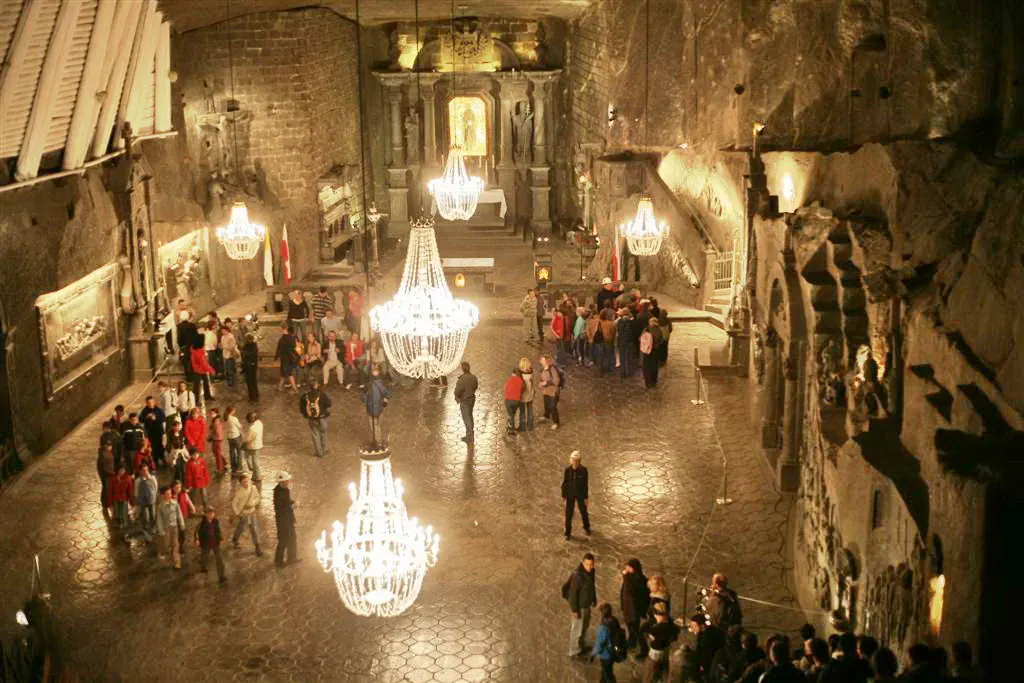Rakesh kumar
Feb. 16, 2022, 6:02 p.m.
Wieliczka Salt Mines: A love story and an ode to survival
When I asked our tour guide what the point was in visiting the Wieliczka Salt Mines, which had stopped functioning way back in 2007, the Krakow local smiled and said there were a lot of reasons for visiting the place. For one, it was a Unesco site and as important for Poland as the Taj Mahal was for India. Though he refused to reveal much more, he warned us that the tour would entail a three-kilometre walk and 800-plus steps.
The Wieliczka Salt Mines are a 90-minute drive from Krakow, the former capital and second largest city of Poland and our tour began with a tiny elevator ride taking us down to a depth of 65 metres and then continuing on foot to more than 400 feet underground. The chambers and pits are interlinked by serpentine, well-illuminated passages carved out of ancient slabs of salt and the mines, when we reached them, were incredible. An underground township complete with a lake, churches, restaurants, a ballroom and passages that run for a 300-km stretch!
Our guide recounted a love story connected with the mines. These were, he said, bestowed as part of the dowry of a Hungarian princess, Kinga, when she married Boleslaw the Shy over 700 years ago. She’d asked her father for a lump of salt, since the commodity was prized in Poland, and he took her to a salt mine in Máramaros, where she threw her engagement ring into one of the shafts before leaving for Poland. On arriving in Kraków, she asked the miners to dig a deep pit until they came upon a rock. The miners found a lump of salt in there and on splitting it, they found the princess’s’ ring. Kinga thus became the patron saint of salt miners in and around the erstwhile Polish capital.
We encountered chandeliers, altar pieces, high ceilings and ornate flooring. The miners had carved their way through salt to create 2,000 chambers and corridors. It was all so unbelievable until one picked a bit off the wall and tasted it!
Then there was the chapel of the Blessed Kinga — the best part of the mine because it’s entirely carved from salt. And it was done not by any outsiders but stealthily by a group of miners. There are many more smaller chapels, including the 17th century one dedicated to St Anthony, and a huge underground salt lake.
After spending almost three hours inside the mines, we headed back to Krakow, which is today more of a cultural city. It is not as big as Warsaw, the present capital, or Milan or Paris, but it has a unique charm that could lead a visitor to extend his/her trip by a day at least.
Almost every building in this city has some historical connection. During World War II, the Nazis decided to make Krakow their base – dark facts have it that they wished to exterminate the population – and while the rest of Poland was bombed, the old city was preserved. We stayed at Hotel Pod Roza in the historical Florianska Street, which also sports boutiques, pubs, clubs, restaurants and hotels lining this segment of the medieval Royal Route, past the main market square to Wawel Castle. The 14th century St Mary’s Church and its two uneven towers, the medieval houses, the cobblestone streets and the clip-clop of horse-drawn carriages, all add to Krakow’s charm. And there is a lot more to see.
We visited Kazimierz, Krakow’s historical Jewish district, which has had settlers since the 15th century. The place became famous after the Oscar-winning Schindler’s List was filmed there. The place is abuzz with open-air cafes, synagogues, exclusive hotels, restaurants, handicraft workshops and more. Our trip ended with authentic Polish food at the Piano Rouge restaurant in the Old Town Square.
Quick facts
There is no direct flight from Delhi to Warsaw or Krakow. You can fly Austrian Airlines via Vienna.
The best place to stay is Pod Roza at 14, Florianska Street, next to the market square.
For further information, call the Poland National Tourist Office at +(4822) 536 7070 or visit www.pot.gov.pl
.png)
